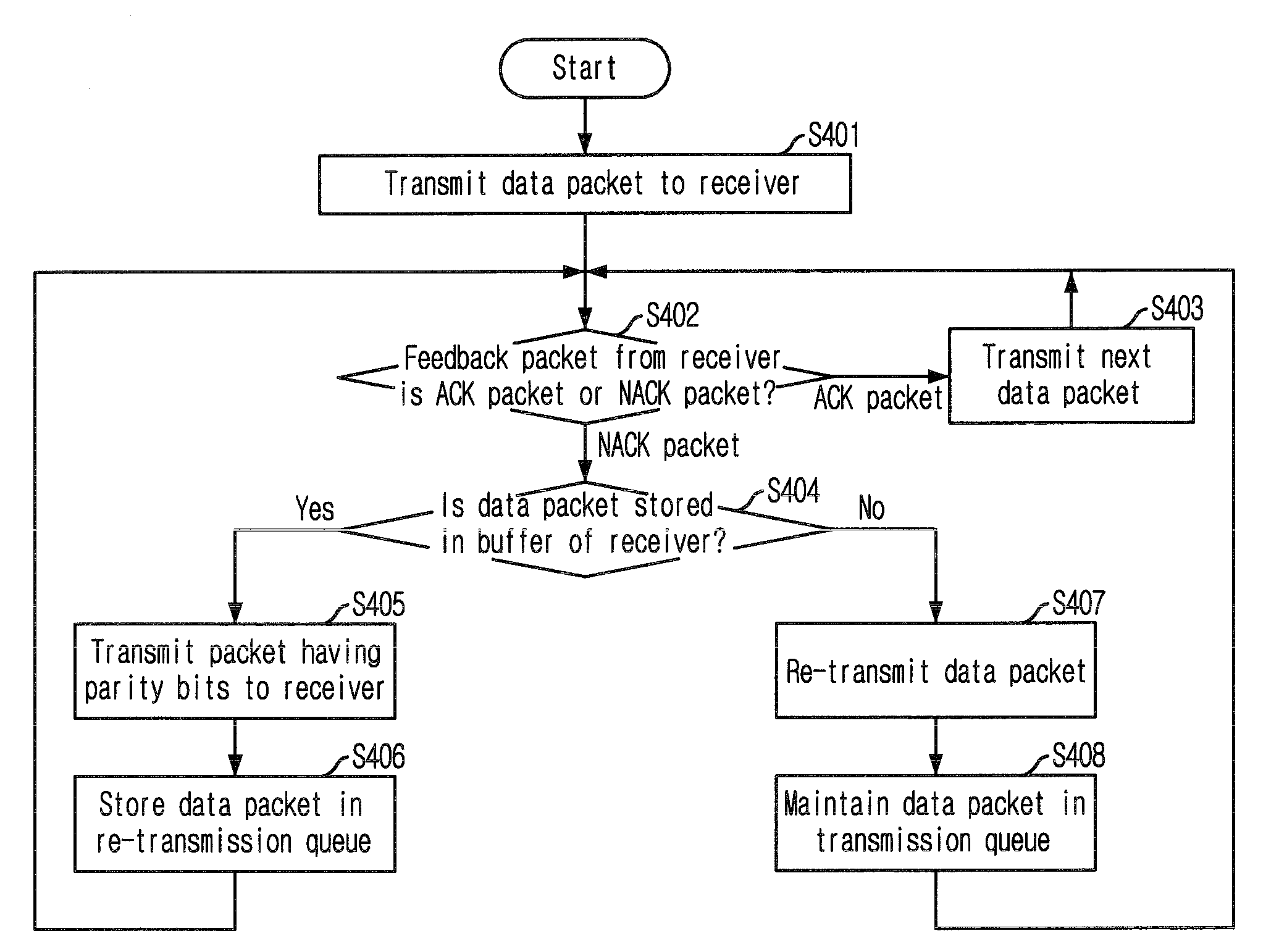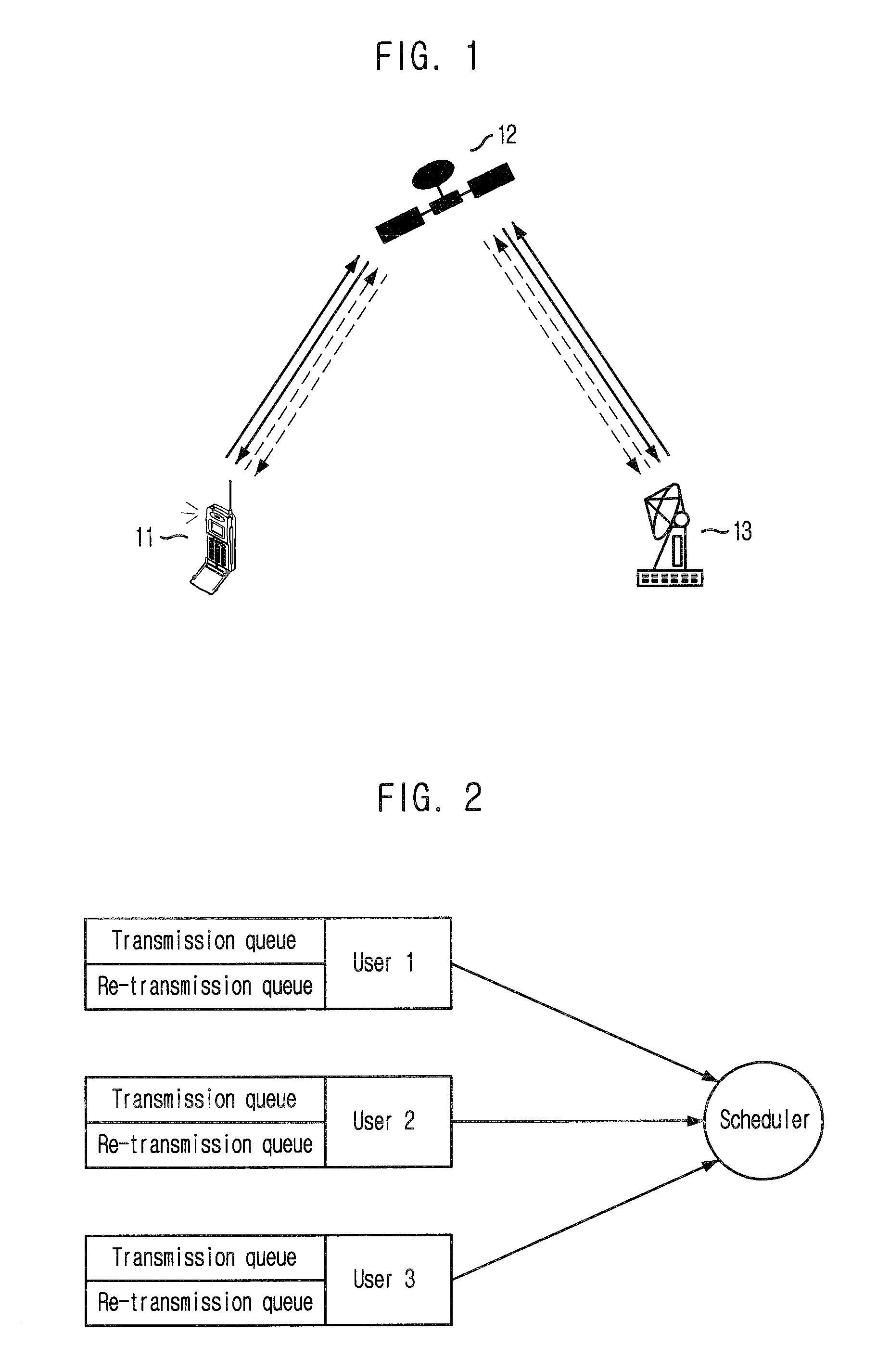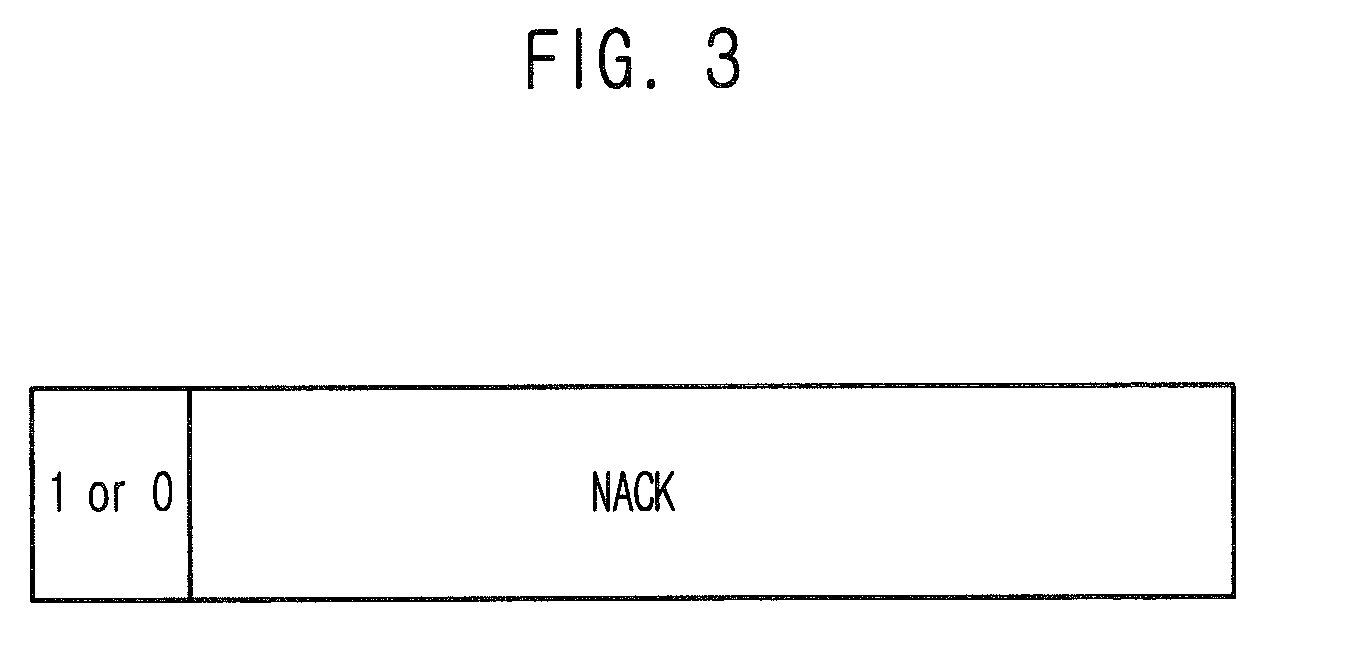Method for preventing consecutive packet errors in selective hybrid ARQ system
a technology of automatic repeat request and packet error prevention, applied in the direction of error prevention/detection by transmission repeat, fault response, instruments, etc., can solve the problems of increasing the complexity of a physical layer, low probability of occurrence of error during re-transmission, and difficulty in adjusting errors based on parity bits, so as to prevent wasteful use of bandwidth and consecutive packet errors, the effect of small buffer
- Summary
- Abstract
- Description
- Claims
- Application Information
AI Technical Summary
Benefits of technology
Problems solved by technology
Method used
Image
Examples
first embodiment
[0043]FIG. 4 is a flowchart describing a method for preventing consecutive packet errors caused by a buffer capacity of a receiver in a selective HARQ system in accordance with the present invention.
[0044]First, a central station transmits a data packet to a receiver at step S401.
[0045]The transmitter receives a feedback packet from the receiver corresponding to the data packet, and checks whether the feedback packet is an acknowledgement (ACK) packet or a negative acknowledgement (NACK) packet at step S402.
[0046]Here, when the receiver receives the data packet, the receiver checks whether the data packet is normal or not. If the data packet is normal, the receiver transmits the ACK packet to the transmitter. Also, if the data packet is not normal, the receiver transmits the NACK packet to the transmitter. Here, 1-bit information notifying whether the received data packet is stored in the buffer or not is inserted into the NACK packet and transmitted to the transmitter. For example,...
second embodiment
[0053]FIG. 5 is a flowchart describing a method for preventing consecutive packet errors caused by a buffer capacity of a receiver in the selective HARQ system in accordance with the present invention.
[0054]First, the central station stores an initial buffer capacity of the receiver at step S501. Here, it is desirable that the initial buffer capacity of the receiver is provided from the receiver.
[0055]Then, the transmitter transmits a data packet to the receiver at step S502.
[0056]Then, the transmitter receives a feedback packet from the receiver in response to the data packet, and checks whether the feedback packet is an ACK packet or a NACK packet at step S503.
[0057]Here, when the receiver receives the data packet, the receiver checks whether the data packet is normal or not. If the data packet is normal, the receiver transmits the ACK packet to the transmitter. Also, if the data packet is not normal, the receiver transmits the NACK packet to the transmitter.
[0058]If the feedback ...
PUM
 Login to View More
Login to View More Abstract
Description
Claims
Application Information
 Login to View More
Login to View More - R&D
- Intellectual Property
- Life Sciences
- Materials
- Tech Scout
- Unparalleled Data Quality
- Higher Quality Content
- 60% Fewer Hallucinations
Browse by: Latest US Patents, China's latest patents, Technical Efficacy Thesaurus, Application Domain, Technology Topic, Popular Technical Reports.
© 2025 PatSnap. All rights reserved.Legal|Privacy policy|Modern Slavery Act Transparency Statement|Sitemap|About US| Contact US: help@patsnap.com



